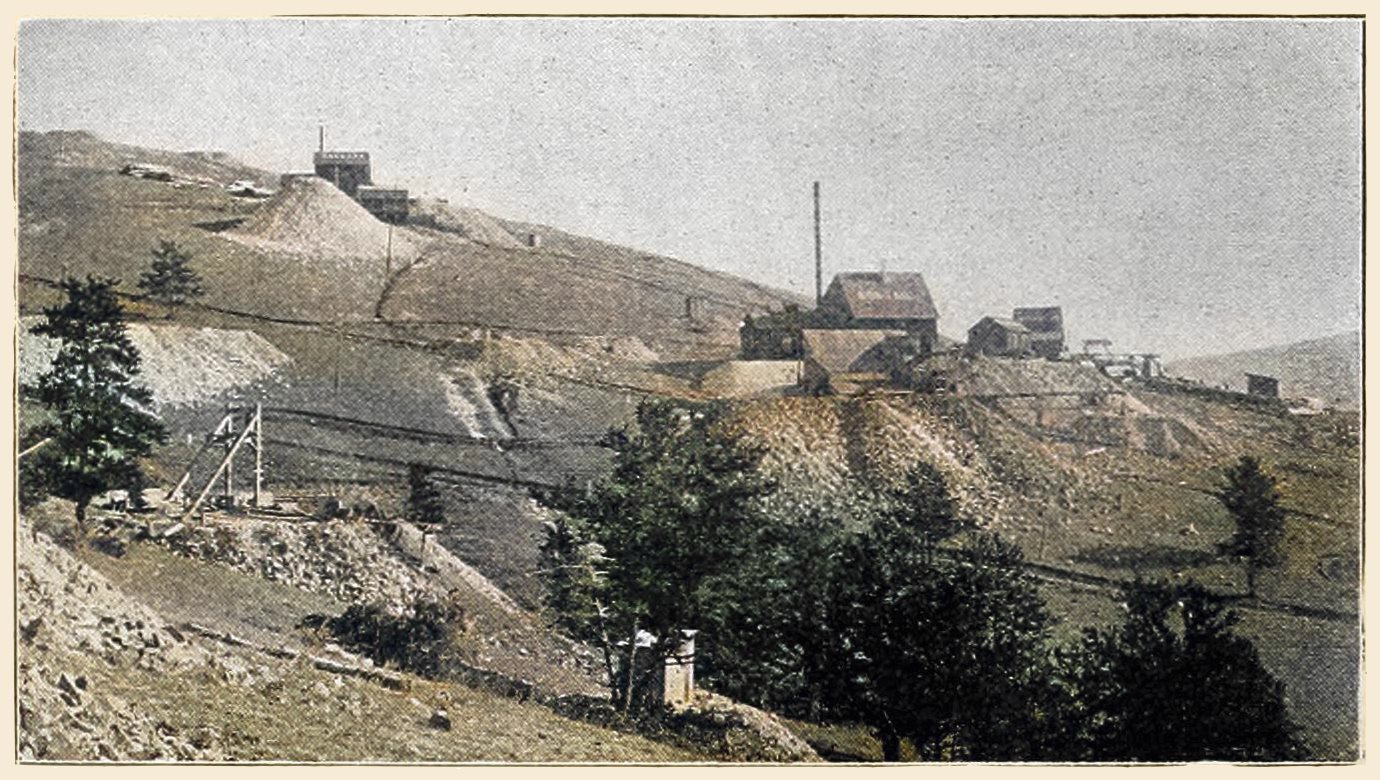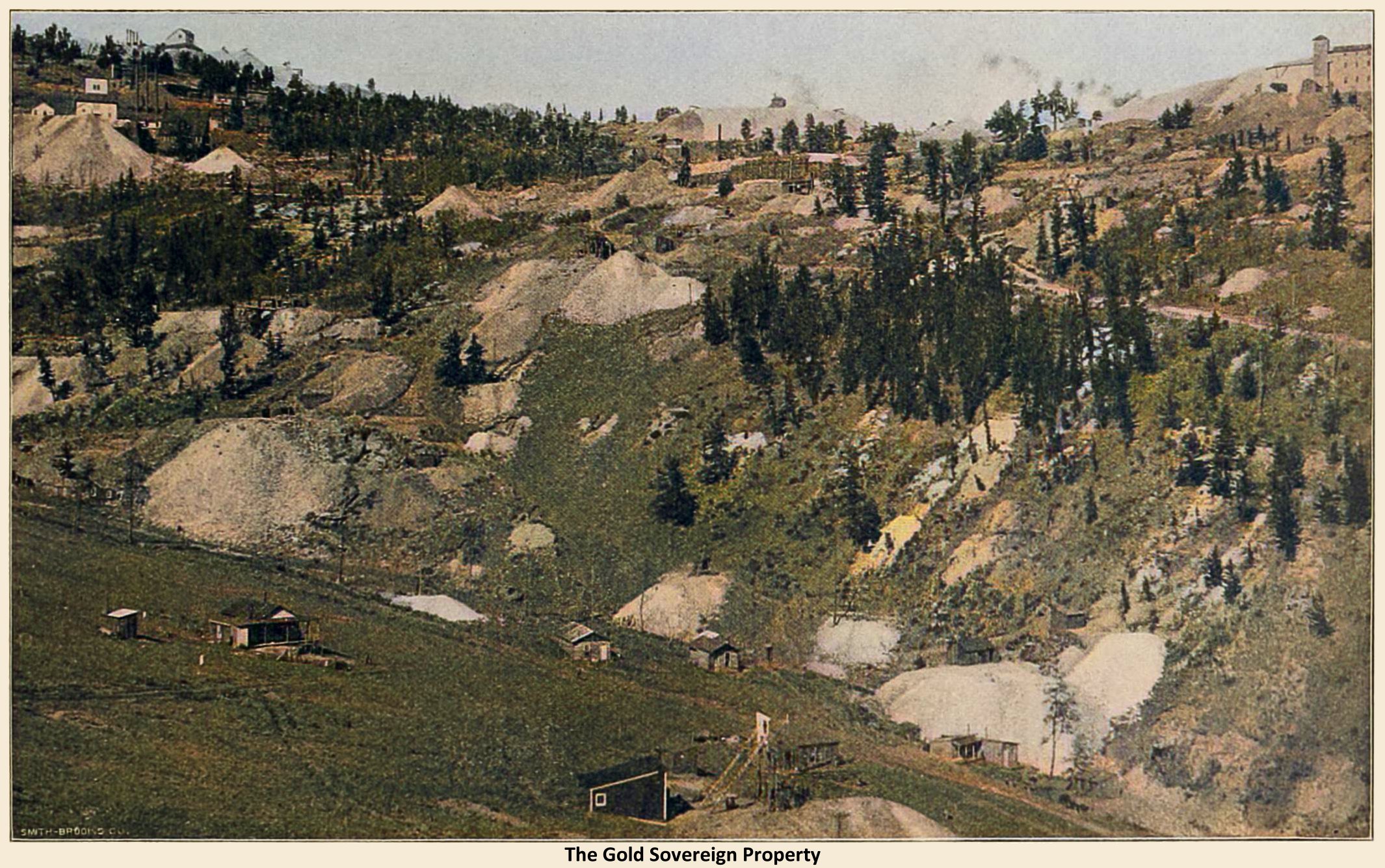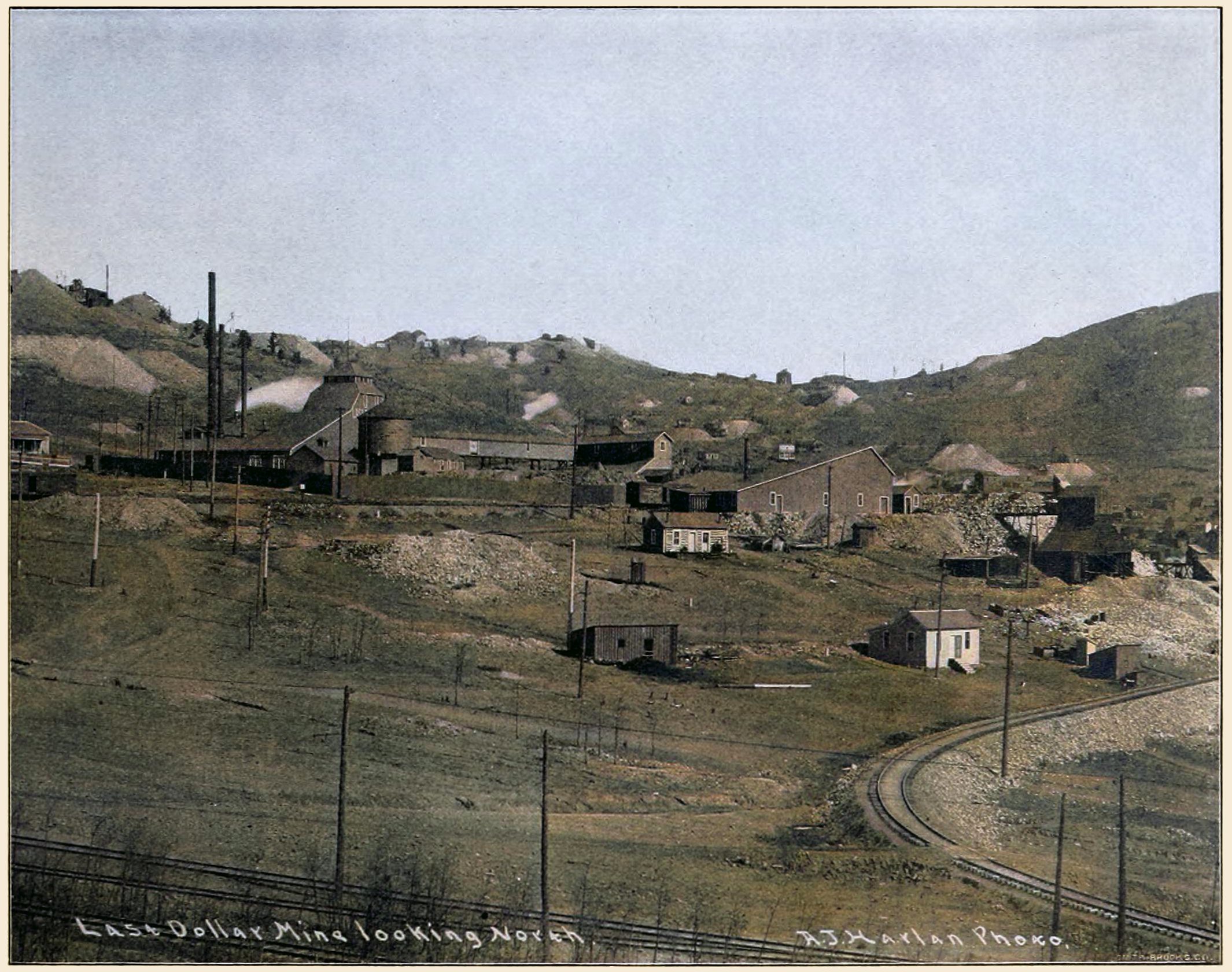-> My Collection, Also on
-> the Internet Archive Site; Link to article.
New Year Edition 1903
(pages 17-18)
I added images from my collection, and procured the coloring of the images, source article had no pics used
 |
A conservative and intelligent paper, showing that its life will be long and prosperous, by Chas. J. Moore, the well-known Mining Engineer. |  |
Every mining district in the western portion of the United States has its alternation of "boom" and quietude, activity and dullness, until the permanent average production is reached, and the problems of supply and demand finally settled on business lines.
In Cripple Creek district a feature of fluctuation entirely outside of the question of the ore production, labor, transportation, treatment facilities and charges has had more influence than anything else on the general prosperity of the district - the mining stock market.
This influence has at times been quite detrimental to the interests of the district. It is difficult to make the ordinary investor understand that the actual condition of the raining industry is not directly reflected in the stock market.
In fact the two are as completely separated as the Chicago grain market and the actual production of cereals.
The great depression of the stock market here for the past two years has caused a false impression through the country that there is a constant and serious decrease in the amount and valuation of the ore production. The stock market is merely a field for speculation, and the quotations on any stock is in no degree based upon the indications at the mine upon which the company is nominally organized.
This is certainly wrong, but it, appears as though no reform will ever occur unless all promoters and brokers were held by law to strict accountability for all statements made in reference to the properties whose stock they may be offering, or the enterprises promoted.
In looking at the future, there are several questions to be considered.
1. Are the mines permanent, and for how long will they continue to produce payable ore?
2. Will the present ore-producing territory be enlarged, and if so, in what direction?
3. Will the treatment facilities continue in the present state, improve or deteriorate?
4. Will the transportation facilities continue, improve or lessen?
It would seem that the consideration of the first two questions includes an answer to the last two; if, for instance, the district will enlarge, the transportation and treatment facilities will be enlarged at an equal rate, and charges for both decrease as the supply becomes larger.
From the numerous developments that have been made in the territory outside a circle, say, six miles in diameter, having the summit of Iron Clad hill for its center, it would appear that no further extension of the ore-bearing district can be expected beyond the limits we now have.
This does not mean that all the mines are already opened, for very large tracts of territory within this circle remain undeveloped, in some of which certainly new mines will be opened up. We have certainly not reached the end of new discoveries within the district.
A large impetus in this direction will be given by opening the properties of the Stratton Mining and Development company to lessees, which is now expected very shortly.
The main question remaining is that of the permanency of the mines, and of this, during the past year, we have received very promising evidence.
The deepest mines now being worked on the different hills are as follows:
| Mine Name. | Feet. |
|---|---|
| Portland, Burns shaft | 1,100 |
| Portland, shaft No. 2 | 1,260 |
| Granite | 1,000 |
| Ajax | 1,000 |
| Stratton's Independence | 1,460 |
| Strong | 900 |
| Gold Coin | 1,100 |
| Modoc | 800 |
| Mine Name. | Feet. |
|---|---|
| Last Dollar | 1,218 |
| Blue Bird | 1,371 |
| Logan | 1,400 |
| American Eagles | 1,500 |
| Wild Horse | 1,050 |
| Isabella | 900 |
| Mine Name. | Feet. |
|---|---|
| Independence T. & M. Co. | 1,160 |
| Vindicator | 1,200 |
| Lillie | 1,510 |
| Golden Cycle | 900 |
All but one of these shafts have good bodies of ore and excellent indications for the future at the lowest levels to which they have thus far attained. Certain of these shafts, to wit, the Last Dollar and Blue Bird, show some of the richest ore ever mined in the district at their lowest levels.
It has lately been asserted that this great enrichment of these veins is due to secondary deposit. By this is meant that the gold values have been largely leached from the upper portion of these veins and redeposited at a lower level, thereby enriching the original ore deposit of the vein by this amount.
It is still an open question whether this enrichment extends to every ore-bearing vein in the district, but it would certainly appear probable that those veins which have shown lean or poor zones of ground in their upper portion carry enriched ore bodies at greater depths; this would be especially true of those veins which at the surface and for some distance below yielded good ore followed by poorer ground in greater depth.
A special feature of these rich ore bodies at 1,200 and 1,300 feet below surface is the presence of copper, which is entirely absent from the upper or oxidized portion of the Cripple Creek vein. Another change in the mineral contents of the veins at the greatest depth thus far attained is the presence of lead, zinc and antimony in sulphide form and increase in the iron sulphide generally called "pyrites."
None of these changes coming in the veins at depth indicate any decrease of gold or silver values, but on the contrary, in the immediate future, a great increase from a plane about 9,100 feet above sea level downwards. The thickness or depth of this rich zone is purely a matter of conjecture, but probably not less than 300 feet. Underneath this may be expected poorer ground, but still carrying payable ore.
Deeper than this, neither practical experience nor theories can guide us as to what to expect in the future, nor can the life of the district be reasonably predicted, though it would appear to be safe to reckon on the present average production for at least seven years to come.
The most menacing question which has arisen during the past year is that of the water, which must be pumped in order to work the veins deeper. The investigations made during the past year have clearly proved that the underground water is not in the nature of streams fed from perpetual springs, but rather an accumulation from many cycles of past rain and snowfalls upon the ground surface which has penetrated to some distance below the surface and there formed a reservoir contained within the granite walls of the Cripple Creek volcano.
Now as pumping is continued in such a reservoir, it follows that the permanent level is being continually lowered and that as the sides of the crater flatten and slope towards its center the total area to be pumped will be less as greater depth is attained.
To shorten the time and expense required for such pumping, various tunnel projects have been proposed during the past year, and the plans for one are now definitely settled, which will be started shortly after the beginning of the year 1903 by the cooperation of half a dozen mining companies most vitally interested.
By the driving of a tunnel 10,000 feet it is estimated that the reservoir will be tapped and the water drained in a short time to a depth of 250 feet below the present level, or to a level of 8,775 feet above the sea.
This will at once enable the El Paso, Mary McKinney, Work, Anaconda, Elkton, Moon-Anchor, Midget and probably many other mines to sink 250 feet deeper than their present workings.
Doubtless long before this tunnel will have accomplished all that is expected of it, another one at greater depth on a more comprehensive scale will be well under way by the cooperation of a much larger number of mine owners, possibly those of the entire district.
In view of all the statements of fact above, it will be seen that successful future of the district is certain, and that the average grade of the ore produced during the next two years will in all probability be higher than at any time during the past, except the years 1894 to 1897.
CHAS. J. MOORE,
Mining Engineer.
Cripple Creek, Colo., Dec. 12, 1902.



_web-colored.jpg)